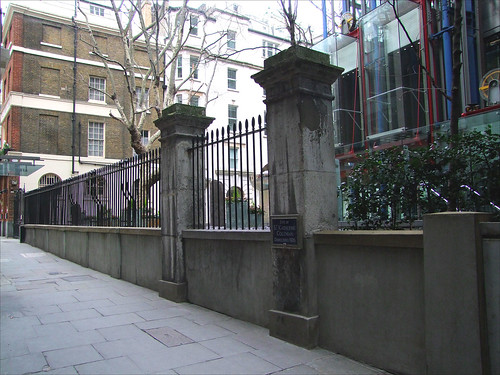| |
|
|
|
|
The population of the City declined drastically during
the 19th Century. The middle classes fled the smoky
alleys to the new pleasant suburbs of the north and east,
and then the railways opened up the south of the
metropolis to the workers of the Square Mile. By the
start of the 20th Century there were parishes in the City
with little or no resident population. The Diocese of
London wondered and frowned about this for a while, and
then in 1919 set up the City of London Churches
Commission to decide on a future for the churches of
these empty parishes. The Commission decided that
nineteen churches should be demolished and the land sold
off, the money raised being used to build new churches
out in the suburbs. This doesn't sound unreasonable
perhaps, but the list of doomed churches makes
interesting reading, including as it did St Botolph
Aldersgate, St Botolph Aldgate, St Dunstan in the East,
St Dunstan in the West, St Magnus Martyr, St Mary at
Hill, St Mary Woolnoth (!) and St Vedast alias Foster. It
was hoped that the towers of some of these churches could
be kept. In the event, only two of the churches on the
list were demolished before the Second World War
intervened, and one of them was St Katherine Coleman.The church stood immediately to the east of
Fenchurch Street station. The dedication differentiated
it from St Katherine Cree, about a hundred metres to the
north-west, and probably came from the name of a nearby
yard. It was a small, late medieval church, rebuilt in
the early 18th Century. No one seems to have had an
enthusiastic word to say for it, and the early 20th
Century guidebooks dismiss it as an uninteresting
preaching box. In any event, it had fallen into disuse by
the 1880s, and only the burial ground was in regular use.
Herbert Reynolds recalled that a final service was held
on the evening of Sunday 20th November 1921. The money
raised by the sale of the site was used to build a new
church in Fulham. There was a certain amount of outcry,
because we had become more antiquarian-minded since the
last huge wave of demolitions by the Diocese in the
mid-19th Century. Perhaps that's what staved off the
destruction of some of the other churches on the list. It
would be nice to think so. And then came the Blitz, which
rather obviated the need for further demolitions.
The church is now the site of the
14 storey Lloyds Registry Building, opened in 2000. But a
surprising amount of evidence of the earlier use of the
space survives. The churchyard wall and railings on St
Katherine's Row are apparently still those shown in
photographs of the early 20th Century. There are grave
markers beyond in the garden which was laid out
sensitively in the 1990s by Richard Rogers for Lloyds.
Simon Knott, December 2015
location: St Katherine's Row, Fenchurch
Street EC3M 4BS- 4/032
status: churchyard only
access: viewable seven days a week
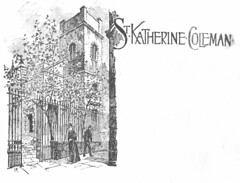 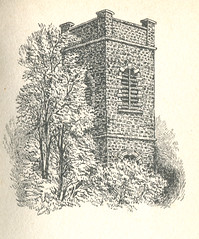  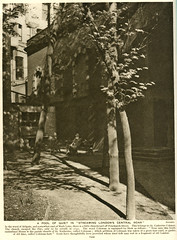 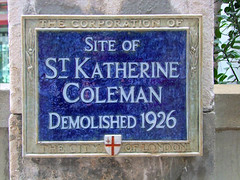
Commission
from Amazon.co.uk supports the running of this site
|
|
|
|
|
|


